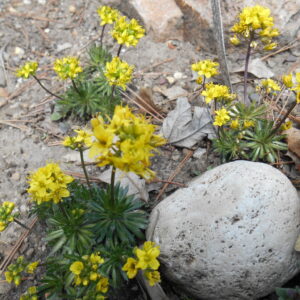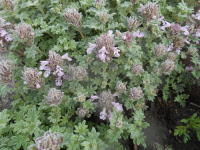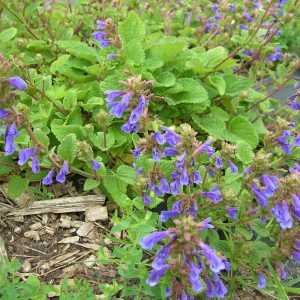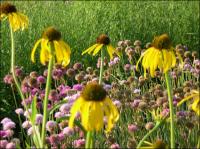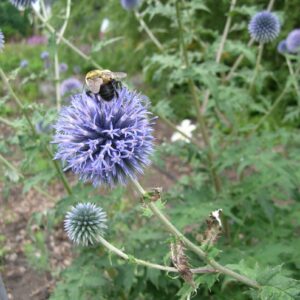Our Plants
Showing 193–200 of 587 results
-
Draba aizoides Yellow Whitlow grass Z 3-8
Tiny yellow flowers in very early spring over succulent, evergreen cushions
OUT OF STOCK
Tiny yellow flowers in very early spring over succulent, evergreen cushions.
Size: 1” x 1”
Care: Full sun in well-drained soil.
Native: EuropeListed in Sanders’ Flower Garden, published in 1913 where it is described as “dwarf, compact-growing alpine, suitable for growing on old walls or on dry, sunny rockeries.” Draba is the classical Greek name for this plant – poultice said to remedy lesions on fingers
-
Dracocephalum botryoides Dragonhead Z 4-7
Fuzzy, grey, deeply divided foliage with baby pink blossoms in May-June
OUT OF STOCK
Fuzzy, grey, deeply divided foliage with baby pink blossoms in May-June
Size: 5” x 18”
Care: sun to part shade in well-drained soil
Native: Caucasus on rocky, stony slopes, and screes where it is now endangered.
Wildlife Value: provides nectar and pollen for bees1st described in 1812. Dracocephalum means “dragonhead,” referring the shape of the flower.
-
Dracocephalum grandiflorum Bigflower dragonhead Z 3-8
Intense blue hood-shaped flowers in summer
OUT OF STOCK
Intense blue hood-shaped flowers in summer
Size: 6”x 8”
Care: full sun in moist, well-drained soil
Native: SiberiaDracocephalum is Greek meaning “dragonhead” referring to the shape of the flower. Introduced to gardens by 1759. Grown in American gardens since 1850’s. William Robinson, father of the mixed perennial border, described this as “very dwarf” having “large clusters of intensely blue flowers.” Sanders considered it an “excellent plant for a sunny rockery.” 1913.
-
Dracocephalum rupestre in China mao jian cao Z 4-8
True deep blue, hooded flowers rise above heart-shaped, crinkled foliage in the heat of mid-summer
OUT OF STOCK
True deep blue, hooded flowers rise above heart-shaped, crinkled foliage in the heat of mid-summer
Size: 12’ X 12”
Care: sun to part shade in well-drained to moist well-drained soil
Native: Western China in alpine meadows and grassy slopesChinese made a tea from this. First named in the West in Journal of Botany, British and Foreign, 1867 Vol7 p. 166. Dracocephalum means “dragonhead” in Greek.
-
Dryas drummondii Drummond’s mountain avens, Yellow mountain avens Z 3-9
Mat of leathery, wrinkled, creeping foliage, glossy green turning bronze in fall, oval with rounded teeth. From May through July leafless, erect flower stems rise 4-8” above the ground-hugging leaves, with nodding 8 to 10 buttercup yellow petals emerging from a fuzzy, decorative cup.
OUT OF STOCK
Mat of leathery, wrinkled, creeping foliage, glossy green turning bronze in fall, oval with rounded teeth. From May through July leafless, erect flower stems rise 4-8” above the ground-hugging leaves, with nodding 8 to 10 buttercup yellow petals emerging from a fuzzy, decorative cup.
Size: 6-10” x 12-24”
Care: sun in well-drained soil. Drought tolerant
Native: Alaska south to Washington east to Montana, most of Canada1st collected in seed by Sir John Richardson (1787-1865) Scottish naturalist on Franklin’s 1st overland expedition to the Arctic coast, 1819-1822. Franklin called the expedition “disastrous” but went again. Both Richardson and Thomas Drummond (1793-1835) collected this in seed and flower on Franklin’s 2nd overland expedition to the Arctic coast. (1825-1826) It is named to honor Thomas Drummond at Richardson’s request. Curtis’s Botanical Magazine v. 57 ser. 2 (1830). Richardson then led a 3rd expedition searching for Franklin’s last Arctic expedition, finding no trace of the lost ships or men.
-
Echinacea pallida Pale purple coneflower Z 4-8
Narrow, weeping pink rays in early summer surround hedgehog-like cone.
Narrow, weeping pink rays in early summer surround hedgehog-like cone.
Size: 2' x 14"
Care: Full sun in well-drained soil.
Native: much of continental US east of Colorado
Wildlife Value: attracts bees including bumblebees and caterpillars of some Skippers and a few moths. In fall finches eat the seeds. Deer resistant
Awards: Great Plants for Great PlainsEchinacea is Greek meaning hedgehog referring to the bristly conehead. Used to cure many ailments – arthritis, rheumatism, burns, colds, boils, fever, sore mouths, throats & gums, toothaches, snakebites, headaches, stings and distemper in horses – by several tribes – Cheyenne, Crow, Dakota and Sioux. 1st collected by Englishman Thomas Nuttall (1786-1859) who searched much of No. America finding thousands of new plants.
-
Echinacea paradoxa Bush’s coneflower Z 3-9
Sulfur yellow petals droop down below the bristly, brown central cone- Blooms in early summer
Sulfur yellow petals droop down below the bristly, brown central cone- Blooms in early summer
Size: 2-4' x 14"
Care: sun to part shade in moist well-drained soil
Native: Ozark Mountains of Arkansas and Missouri
Wildlife Value: attracts bees and butterflies. In fall finches eat the seeds. Deer resistantEchinacea is Greek meaning hedgehog referring to the bristly conehead. Paradoxa because yellow petals on a Purple coneflower is a paradox. The first description of this is based on plants collected by B.F. Bush in Swan, Nichols Junction and Eagle Rock Missouri in 1878 and 1898 as well as one collected by German planthunter “Father of Texas Botany” Ferdinand Lindheimer in Texas in 1843. Transactions of the Academy of Science of St. Louis, Vol XII January to December, “Notes on Some Plants of the Southwestern United States” J.B.S. Norton 1902, p. 40.
-
Echinops ritro Globe thistle Z 3-9
Mid to late summer, round, steel blue flower heads at 1st prickly then turning soft and fuzzy.
Mid to late summer, round, steel blue flower heads at 1st prickly then turning soft and fuzzy.
Size: 3-4' x 18"
Care: Sun in well-drained soil, drought tolerant
Native: Southern Europe
Wildlife Value: attracts American painted lady butterflies, deer resistantThe name Echinops is Greek meaning “like a hedgehog” describing the circular spiny thistles. Introduced to England by 1570. Popular Victorian flower. Cultivated by Washington at Mount Vernon.

